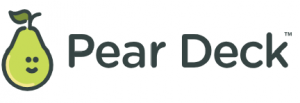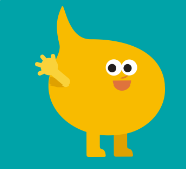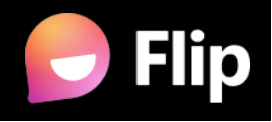Back in my post from Module 6, I created the beginnings of a web-based toolkit using the digital bookmarker, Symbaloo. You can read that post in its entirety by clicking this link: https://blogs.ubc.ca/lmacneiltlblog/2023/10/15/lled-462-assignment-1-learning-log-2-digital-toolkit-takeaways-from-module-6/.
Module 8 builds on this theme, but with a focus on supporting the development of literacy with web-based tools. For this assignment, I went back to the toolkit I developed on Symbaloo, and reviewed what I curated on my webmix. I liked what I had, but I knew it wasn’t enough to support teachers and students in the teaching and learning of literacy.
After reading Jennifer Snelling’s 2019 article, 18 Tech Tools Librarians Need Now: Student-tested and approved: The best applications to Fire active learning, from podcast creation and coding apps to VR, I was inspired to expand the repertoire of applications on my Symbaloo page. There is a lot of digital software for teachers and students to contend with; so, I wanted to include applications that were accessible and useful for teachers and students alike. Most of my choices, I included from Snelling’s article because of their accessibility and user-friendly applications. One program, Craft, I learned about from a fellow student, and teacher colleague, who spoke to the benefits of this program that is used in her school which is an Apple school. She spoke highly of its ease of use, and after some investigation, I decided to include it in my curation.
Below is a screen shot of my Digital Portfolios and Collaboration Grouping. What follows is a demonstration of how I use the application Canva Education with my students.

This is the new addition to the Symbaloo Webmix page. I added 9 applications under the heading, Digital Portfolios and Collaboration. These applications are useful for students to demonstrate their learning using a digital platform.
Wakelet allows users to curate visual lists of content related to subjects being studied. Teachers can use this application to curate collections of resources to scaffold their students’ research, and easily share this information with their class. Students can create their own curated research lists that they can share with their peers. This is helpful when doing group projects and year-long studies.
Craft is a free web-based application that is multi-modal. Students can post their research, assignments, videos, pictures, blogs, and chats, on this application. Teachers can create groups, and everyone can share their work and thoughts on this application. My colleague’s thoughts on her use of this app are here. It’s a short, but great read to get a perspective from a teacher who sees the benefit of this app with her colleagues and her students.
Pear Deck is an application that can be added on to Google Docs or Microsoft PowerPoint applications. It allows teachers to add interactive feedback among students and teachers with slides that are created with the above-mentioned applications. This can be useful for student dialogue and assessments.
Buncee is another great digital tool teachers can use with their students. This can be useful for students as young as K-1. This application stopped it iOS app in July 2023, but it is still available through the web. Teachers can set up a class, and students can demonstrate their learning visually using virtual visual stickers. Buncee offers lots of great templates and visual designs for students to choose from. It offers teachers lots of options for assignments and projects.
For book writer “nerds” like me, this app is a must. In the past, I have always used the company, Student Treasures to write and publish my students’ writing. Student Treasures always provides one free hard cover book for the class, but any other orders must be bought, and they can be pricey. The paper provided is limited, and if students make errors, tears and heartache follow. However, this app is iPad friendly but can be used through laptops as well and is free to use. Book Creator allows students to create their own e-books and audio books. They can use their own illustrations, or images from Google. What is great about this app is that it is multimodal and promotes writing for kids across various learning abilities with the help of assistive technology.
For students who want to experience their first podcast in storytelling, Anchor is the perfect platform to use. The Anchor podcast platform publishes to Spotify so students can access the content at a later date.
Snelling cites Flipgrid as the favourite tech tool used among librarians who were interviewed in her article as a social learning tool that enables Q & A in video format. I included this tool as a collaborative app for group work.
This iPad-based application is great for student animations. For students who want to experiment in multimodal storytelling, do ink is a great app to use. Users can set up their storyboards frame by frame and can draw their illustrations or import photos.
The final application I included in the web mix is Canva for Education. I use this quite a bit and have been using it for only a few months. It is a web-based graphic design and photo editing program similar to PowerPoint but has more features that come with it. I can create a class with Canva and share documents with them. There are many more templates that I can find on the platform that are free to use. I use Canva to create many templates for student work. One example is for student responses to literature. I have been teaching the novella, Toys Go Out with my grade 2/3 students. We have been discussing what we read versus what we think and visualize. I created a template on Canva and asked them to record their responses to a chapter called “My Reading, Thinking Voice”. Here is the link: Reading Voice/Thinking Voice.
I also do a lot of SEL lessons with students. We always start the day with breathing exercises. A teacher candidate created some cute Halloween themed breathing exercises posters on Canva Education and shared them with us. They are here, and I have been using them with students. The possibilities with Canva are endless, and students are highly engaged with what I create.
As I transition to the role of Teacher-Librarian and support and promote Literacy within my school community, I see how I can use these applications with my K-7 students. We have so many ELL students who would benefit from the multi-modal applications of these web-based applications, and the students who struggle with written output but who have so many ideas to share but need a different outlet to express their ideas. Technology with support from the SLLC is a great place to start.









